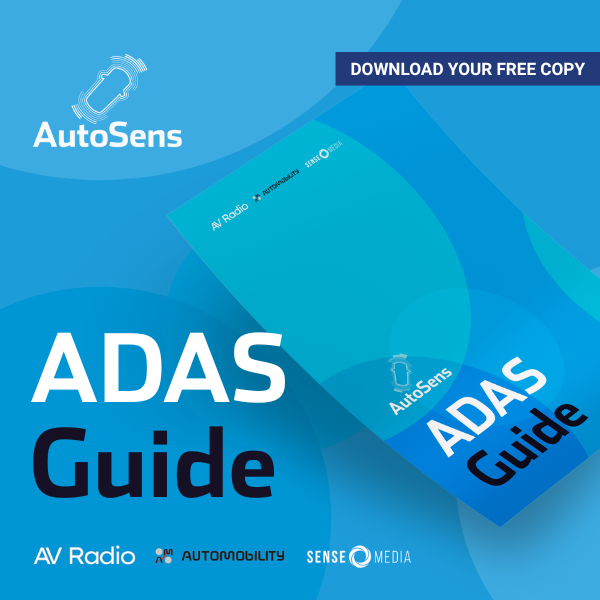OMNIVISION is a global fabless semiconductor organization that develops advanced digital imaging, analog and touch & display solutions for multiple applications and industries, including mobile phones; security and surveillance; automotive; computing; medical; and emerging applications. Its award-winning innovative technologies enable a smoother human/machine interface in many of today’s commercial devices.
As the demand for intelligent automotive vision systems grows, OMNIVISION are at the forefront of innovation. In this Q&A ahead of InCabin USA, we catch up with Dr. Paul Wu, Head of Automotive Product Marketing, to explore how OMNIVISION is optimizing sensor performance across diverse applications, the impact of AI integration, and their role in NVIDIA’s new AI Systems Inspection Lab.
1) OMNIVISION’s sensors are now used in a wide range of automotive vision systems—from front-view cameras to surround-view and in-cabin applications. How do you approach optimizing performance across such varied deployment scenarios?
We aim to tailor each sensor’s pixel architecture, resolution, dynamic range, and to its specific use case. Whether it’s long-range visibility for ADAS or close-range accuracy for DMS/OMS, we design for the environment the sensor will operatein — and ensure consistency across platforms through careful system-level integration and co-optimization with ISP and software partners.
2) What emerging trends, such as higher resolution sensors, AI integration, or enhanced low-light capabilities, do you see shaping the future of automotive imaging?
We see several key trends driving the future of automotive imaging. Higher resolution sensors are enabling more precise object detection and classification, which is critical for ADAS and autonomous systems. At the same time, AI integration is also an essential trend— not just at the system level, but within the sensor pipeline itself — to support smarter, faster decision-making. Enhanced low-light and HDR capabilities are also gaining importance as vehicles must operate reliably in a wide range of real-world conditions, from tunnels to nighttime driving. These advancements are converging to create more intelligent, adaptive vision systems that improve both safety and user experience.
3) Low-light and flicker mitigation are still key technical hurdles — how do your newest sensors handle environments with extreme lighting contrasts or flickering LEDs?
Our latest sensors integrate advanced HDR engines and proprietary flicker mitigation algorithms that allow them to capture stable, clear images in highly variable lighting. For example, Our LOFIC technology has continuously advanced alongside emerging requirements — most notably, the growing need for high dynamic range (HDR). This evolution enables our sensors to capture crisp, detailed images even in challenging lighting conditions where bright and dark areas exist within the same scene.
4) You were recently announced as an inaugural member of the NVIDIA AI Systems Inspection Lab. Tell us more about OMNIVISION’s role and what this means for the industry going forwards?
We’re proud to be a member of NVIDIA’s AI Systems Inspection Lab. This collaboration reflects our shared commitment to advancing AI-powered perception systems. By aligning our high-performance image sensors with NVIDIA’s powerful compute platforms, we’re accelerating the development of robust, real-time computer vision solutions for automotive and industrial applications. This partnership helps set new benchmarks in imaging quality and efficiency, ultimately enablingsafer, smarter vehicles and ADAS system.
5) We’re excited you’re joining us again at AutoSens as our Lead Sponsor, and taking part in InCabin too! Can you tell us what you’ll be bringing to the show this year?
We are excited to bring our latest automotive sensor innovations to AutoSens and InCabin this year. Visitors can expect demos of our newest RGB-IR, global shutter, and HDR sensors, as well as hands-on insight into how our solutions support both interior sensing and external perception. Our team is also looking forward to engaging with industry peers, sharing expertise, and supporting the AutoSens and InCabin communities in shaping the future of automotive vision.
With breakthroughs in HDR, low-light imaging, and AI-powered perception, OMNIVISION continues to drive the future of automotive vision. As the Lead Sponsor of AutoSens USA 2025, their latest innovations will be on full display — don’t miss the chance to connect with the team at AutoSens USA and InCabin USA this year.
Interested in exterior sensing technology?
With a pass to InCabin USA, you’ll also get full access to our co-located sister event, AutoSens. Take a look at the AutoSens Demos here >>





